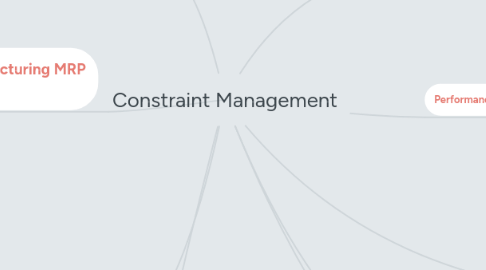Constraint Management
by Ana Linda


1. Basic Manufacturing Building Blocks
1.1. Bottleneck feeding nonbottleneck, Nonbottleneck feeding bottleneck, Output of bottleneck assembled into a product, Bottleneck and nonbottleneck have independent markets for their outputs
2. Methods of control
2.1. Time Components
2.2. Finding the bottleneck
2.3. Saving time
2.4. Avoid changing a nonbottleneck into a bottleneck
2.5. Drum, buffer, rope
2.6. Importance of quality
2.7. Batch size
2.8. How to treat inventory
3. Synchronus manufacturing MRP & JIT
3.1. JIT: Limited to repetitive manufacturing
3.1.1. JIT is a trial-and-error procedure applied to a real system
3.2. S. Manufacturing approach uses forward scheduling
3.3. Trying to smooth capacity using MRP is so difficult and would require many computer runs
4. Relationship with other areas
4.1. Accounting's
4.2. Marketing
5. Goal
5.1. Make money
6. Performance Measurements
6.1. Financial
6.1.1. Net profit, Return on investment, Cash flow
6.2. Operational
6.2.1. Throughput, inventory, operation expenses
6.2.1.1. Throughput: Rate at which $ is generated by the system through sales
6.2.1.2. Inventory: Money that the system has invested in purchasing things it intend to sell
6.2.1.3. O. expenses: Money that the system spends to turn inventory into throughput
6.3. Productivity
6.3.1. Actions that bring a companycloser to its goals
7. Productivity
7.1. Unbalanced Capacity
7.1.1. Dependent Events
7.1.1.1. Process sequence
7.1.2. Fluctuations
7.1.3. Statistical events
7.1.3.1. Normal variation
8. Bottlenecks
8.1. Resource whose capacity is less than the demand placed upon it
8.2. Nonbottleneck
9. Capacity constrained
9.1. CCR
9.1.1. Its utilization is close to capacity & could be a bottleneck if it is not scheduled carefully
